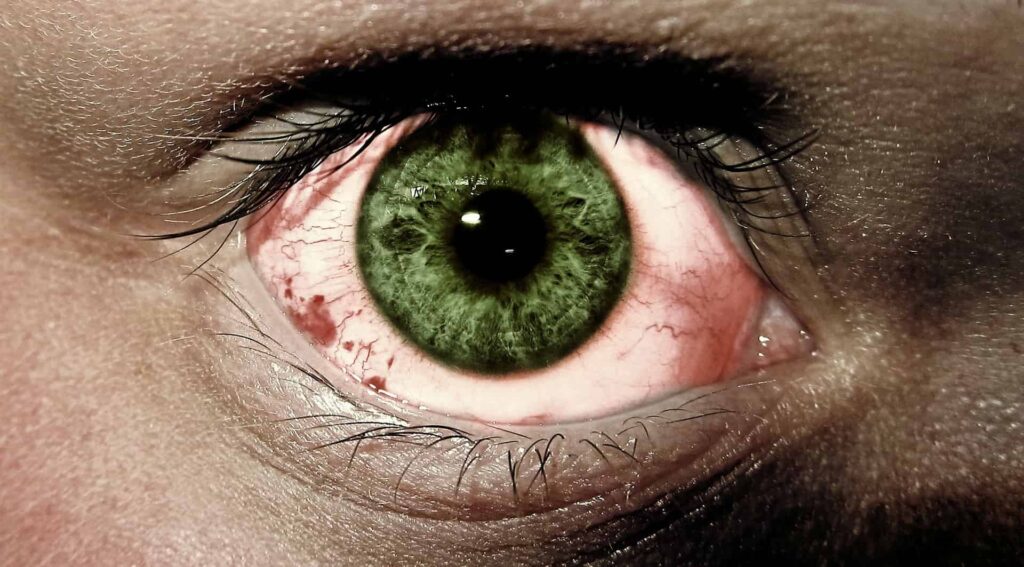Conjunctivitis (Pink or Red Eye) Alert: Causes, Symptoms, Diagnosis, and Prevention Tips
Admin
- 0

Conjunctivitis is called the Inflammation of the conjunctiva. It is a situation where the eyes become red. Allergic conjunctivitis is basically caused by allergy. Allergens are substances that cause allergies. Everyone is allergic to one or more substances present in the environment. The most common allergens are dust, pollen grains, etc. The list of allergens is boundless and individual-specific. When a person who is prone to allergy, gets exposed to allergens, it causes the release of some chemicals called Histamines by allergy-mediating cells like Mast cells. It causes redness, itching, and watering in the eyes. Unlike the usual red eye or infective conjunctivitis, allergic conjunctivitis is not infectious.
Contents
ToggleSymptoms of Conjunctivitis:
Some, common Symptoms of Conjunctivitis are:
Redness:
Due to the inflammation in the conjunctiva, the eye looks red or pink.
Itching:
The affected eyes may feel itchy and uncomfortable.
Watery discharge:
A clear or white discharge may be present, causing crusting around the eyelids.
Grittiness:
The eye may feel gritty or sandy as if something is stuck in it.
Sensitivity to light:
Conjunctivitis can make the eyes sensitive to light, causing photophobia.
Also Read: 10 Most Common Symptoms of Allergic Rhinitis
Causes of Conjunctivitis:
Various factors may contribute to the development of conjunctivitis, including:
Viral Infections:
Viruses, such as the common cold or adenoviruses, can lead to viral conjunctivitis.
Bacterial Infections:
Bacteria like Staphylococcus aureus or Streptococcus pneumoniae can cause bacterial conjunctivitis.
Allergic Reactions:
Allergens like pollen, pet dander, or dust mites can trigger allergic conjunctivitis.
Irritants:
Exposure to smoke, chemicals, or foreign substances can lead to irritant conjunctivitis.
How Conjunctivitis is Diagnosed:
A routine examination by an eye specialist is necessary. There are a few symptoms that are quite common to allergic conjunctivitis, such as papillae, ropy discharge, and limbal hyperplasia. To find out the exact allergens, an Allergy test can be done on individuals who are prone to generalized systemic allergies like asthma, eczema, Atopy, etc.
To determine the specific type of conjunctivitis, the doctor may collect a sample from the eye discharge and send it to a laboratory for testing. This test helps differentiate between viral, bacterial, and allergic conjunctivitis for the appropriate treatment.
Types of Conjunctivitis:
There are several types of Conjunctivitis:
1. Viral Conjunctivitis
This is the most common type, often caused by the same viruses responsible for the common cold. It is highly contagious and can spread through coughing, sneezing, or touching infected surfaces.
2. Bacterial Conjunctivitis
Caused by bacteria, this type is also contagious and can spread through direct contact with the eye discharge of an infected person.
3. Allergic Conjunctivitis
It occurs due to an allergic reaction to irritants like pollen, pet dander, or dust. Unlike viral and bacterial conjunctivitis, this type is not contagious.
4. Chemical Conjunctivitis
Exposure to irritants such as chlorine in swimming pools or harsh chemicals can lead to chemical conjunctivitis.
Also Read: 10 Effective Home Remedies to Cure Allergies
Treatment of Conjunctivitis:
Treatment for conjunctivitis depends on its type:
1. Viral Conjunctivitis
Since it is caused by a virus, antibiotics are not effective. It may be possible to alleviate the pain with hot compresses and the use of artificial tears. Resting and avoiding close contact with others during the contagious phase is crucial to prevent its spread.
2. Bacterial Conjunctivitis
Antibiotic eye drops or ointments are typically prescribed to clear the infection. Applying warm compresses can also relieve symptoms.
3. Allergic Conjunctivitis
Avoiding allergens is essential. Over-the-counter antihistamine eye drops can help reduce inflammation and itching.
4. Chemical Conjunctivitis
Washing the eyes with water is essential to remove the irritants. Artificial tears can help soothe the eyes, and in severe cases, medical attention may be required.
Prevention Tips:
To reduce the risk of conjunctivitis:
- Practice good hygiene, such as washing hands frequently, especially after touching the eyes or face.
- Avoid sharing personal items like towels, pillowcases, or eye makeup with infected individuals.
- Ensure proper cleaning and disinfection of contact lenses.
- Avoid rubbing the eyes, as it can spread the infection.
FAQs
What are the first signs of conjunctivitis?
Ans. Redness and irritation in one or both eyes are the first signs of conjunctivitis. It may also cause itching, a gritty feeling, or excessive tearing.
What is the best cure for conjunctivitis?
Ans. The antibiotic treatment for bacterial conjunctivitis may also be used, while the virus infection is usually cured itself.


